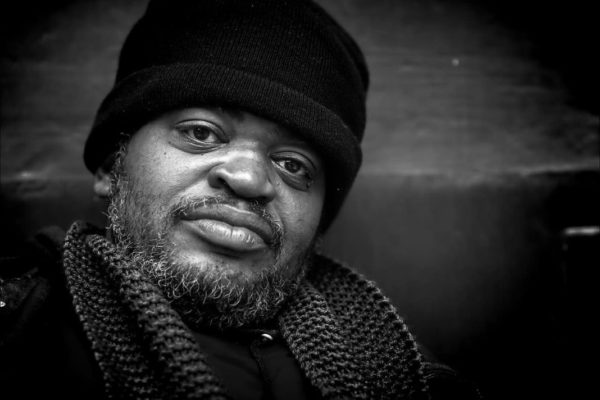
Homeless Black Male (Free photo: Max Pixel)
Three years ago then-90-year-old Arnold Abbott, a World War II veteran, made national headlines after he was cited in Fort Lauderdale, Florida for feeding the homeless — something he’d done nearly every week for more than 25 years, a passion that had led him to found the Love Thy Neighbor organization in 1991.
For city officials, however, an ordinance had been broken. Speaking with the Sun-Sentinel, shortly after his release, Abbott described his experience, revealing, “A policeman pulled my arm and said, ‘Drop that plate right now.’ Like it was a gun.”
Today Abbott is 93-years-old and still fighting — numerous fines and citations — on behalf of Fort Lauderdale’s homeless community, a charitable crusade he admits may not have a successor once he’s gone. In addition to dwindling resources, mounting pressure from the city regarding his weekly feedings have put the organization at risk.
It’s become a familiar story across the country, as cities have struggled to rein in exploding homeless populations, particularly in urban areas. Those that want to assist have faced challenges of their own, thanks in part to more than 70 U.S. cities that have enacted ordinances discouraging just that.
It’s a hurdle that two Atlanta-based activists faced in November after they were cited for giving food to the homeless without a city permit. But with space and manpower limited, many have argued that it’s the most effective method to distribute food and supplies; something a growing number of officials are against.
“They’re trying to make downtown as inhospitable for homeless people as possible. They hope that if they can make it uncomfortable, it will force homeless people to go elsewhere,” Adele MacLean, one of the activists that have received a citation, explained to the Southern Center for Human Rights.
She added, “We believe that everyone should be welcome downtown, and that includes people who have the least.”
Largely tasked with finding their own solutions on a local level, cities have responded by enacting a series of regulations, including the one that MacLean was cited for that requires “temporary food service establishments” to obtain a permit.
While individuals and charitable groups are technically excluded from this requirement, Atlanta officials insist that it includes feeding the homeless, prompting the SCHR to write a letter on behalf of MacLean and others that read in part that they “Hope under the next administration, Atlanta will become known as a place where all people are met with generosity, compassion, and fellowship — regardless of whether or not their neighbors have applied for a permit.”
Across the country, Mohammed Aly, a 28-year-old lawyer and activist, is fighting officials and even some of his own neighbors in his quest to help a camp of upward to 400 homeless people throughout Orange County, California.
“Put yourself in their position: Would you want a toilet, or would you not want a toilet? It is a question of basic empathy,” said Aly to the Washington Post.
Finding the right balance between empathy and public safety has been a challenge, with homeowners, officials and other members of the community voicing their concerns over violence and the potential for disease — something cities like Houston have responded to by providing regular “power washes” of homeless encampments and areas. Still, it’s not a long-term fix by far. While sanitation helps, it does nothing to address issues like mental health, poverty or other contributing factors.
While Houston has been proactive in addressing its homeless population, critics have questioned legislation that makes it illegal to “feed more than 5 people” without a permit — a move that undoubtedly targets those looking to feed the homeless. Those found not in compliance can be arrested for seemingly small offenses.
“They say, ‘If you don’t leave, we’re gonna arrest you.’ Why? Is incarceration the answer to every problem in life?” a 59-year-old Navy veteran asked the Houston Press.
And as the opposing parties argue about ordinances, lives are at stake, as proven the day after Christmas, when a homeless man identified as Ken Martin froze to death at a Cincinnati bus stop, prompting City Councilman Chris Seelbach to tweet, “We must do better. Just a matter of priorities.”
A report from the National Law Center on Homelessness and Poverty reveals just how much work needs to be done, finding “In the past decade, documented homeless encampments have dramatically increased across the country. Many encampments are designed to be hidden to avoid legal problems or evictions. While some encampments last for years, others are forced to move frequently. These factors make documenting their existence a challenge.”
The report goes on to detail how cities have responded via ordinances and physical barriers including walls, fences and even spikes; all designed to discourage the homeless. Methods that Seattle city official Kshama Sawant denounced in the report as “The sweeps have completely failed to address homelessness, which has increased dramatically over the years.”
With some Americans just one paycheck, layoff or unexpected emergency away from financial ruin, there’s a reason why the homeless population has rapidly exploded.
According to Eugene Stroman, who formerly faced homelessness in Houston, “I wouldn’t call it a ‘choice’ about whether to go to those shelters because it felt like going back to prison. I wasn’t allowed to leave when I wanted to, and I was locked in there for close to twelve hours.”
Adding to the report “I had to risk bug bites and disease, sleeping on the floor with insects and rodents. The shelter staff harassed me. My possessions were at risk. And the rules they had made me feel so restricted and dehumanized. They controlled what I could read, who I could talk to — I understand the need for rules with so many people, but it’s institutional living just like a prison. You’re in institutional living once you’re inside of a shelter. And it isn’t really a ‘choice’ when you ask people to give up their rights like that.”
As another report from Los Angeles County official Mitchell H. Katz reveals, “The best estimates are that on a given night in 2016, approximately 550,000 individuals were homeless, of whom 32% were unsheltered and 35% involved families with children.”
Fortunately, there are bright spots as well, even in Florida, where individuals like Arnold Abbott continue to work on behalf of the state’s homeless population. In Sarasota City, Florida officials are finally turning a corner after being locked in a lengthy battle with the ACLU over a ban on outside sleeping. Following a two-year lawsuit, officials are now touting small successes thanks in part to new programs designed to engage and assist.
“We’re engaging with our homeless population, because we sincerely believe we can help people off the streets and to help one person at a time,” Police Chief Bernadette DiPino explained to the Herald-Tribune in September.
With affordable housing still a critical need in many areas, programs like Housing First have found success by adopting a method that includes “a proven approach in which people experiencing homelessness are offered permanent housing. It is based on overwhelming evidence that all people experiencing homelessness can achieve stability in permanent housing if provided with the appropriate levels of services.”
One thing is for certain, without dedicating the proper resources, funding and manpower the homeless population across America will continue to balloon, placing even more strain on local governments across the country.


